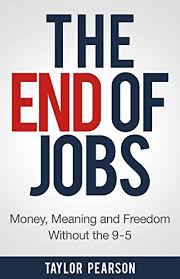Takeaways
● Elephant in the brain: An important bu unacknowledged feature of how our minds work; an introspective taboo.
● Key human behaviors are often driven by multiple motive. Some of these motives are unconscious; we’re less than fully aware of them.
● “Every man alone is sincere. At the entrance of a second person, hypocrisy begins.” – Ralph Waldo Emerson
● Humans are a species not only capable of acting on hidden motives – were designed to do it. Our brains our built to act in our self-interest while at the same time trying hard not to appear selfish in front of other people. And in order to throw them off the trail, our brains often keep “us”, our conscious minds, in the dark. The less we know of our own ugly motives, the easier it is to hide them from others. Self-deception is therefore strategic, a ploy our brains use to look good while behaving badly.
● The elephant in the brain is selfishness – the selfish parts of our psyches. It refers to the fact that we’re competing social animals fighting for power, status, and sex; the fact that we’re sometimes willing to lie and cheat to get ahead; the fact that we hide some of our motives – and that we do so in order to mislead others.
● Human behavior is rarely what it seems. The human brain was designed to deceive itself, the better to deceive others. Four strands of research lead to the same conclusion – that we are “strangers to ourselves”:
1. Micro-sociology – Our brains choreograph our small scale interactions without us being consciously aware of what’s going on.
2. Cognitive and social psychology – Our brains intentionally hide information from us, helping us fabricate plausible pro-social motives to act as cover stories for our less savory agendas.
3. Primatology – Humans are apes which makes human nature a modified form of ape nature. When we study primate groups, we notice a lot of Machiavellian behavior.
4. Economic puzzles – When we study specific social institutions we notice they frequently fall short of their stated goals. They behave as tho they were designed to achieve other, unacknowledged goals.
● Our hidden agenda explain a surprising amount of our behavior – often a majority. When push comes to shove, we often make choices that prioritize our hidden agendas over the official ones. Education isn’t about learning; it’s largely about getting graded, ranked, and credentialed, stamped for the approval of employers. Religion isn’t just about private belief in God or the afterlife, but about conspicuous public professions of belief that help bind groups together.
The Thesis in Plain English
1. People are judging us all the time. They want to know whether we’ll make good friends, allies, lovers, or leaders. And one of the most important things they’re judging is our motives. Why do we behave the way we do? Do we have others’ best interests at heart, or are we entirely selfish?
2. Because others are judging us, we’re eager to look good. So we emphasize our pretty motives and downplay our ugly ones. It’s not lying, exactly, but neither is it perfectly honest.
3. This applies not just to our words, but also to our thoughts, which might seem odd. Why can’t we be honest with ourselves? The answer is that our thoughts aren’t as private as we imagine. In many ways, conscious thought is a rehearsal of what we’re ready to say to others.
4. In some areas of life, especially polarizing ones like politics, we’re quick to point out when others’ motives are more selfish than they claim. But in other areas, like medicine, we prefer to believe that almost all of us have pretty motives. In such cases, we can all be quite wrong, together, about what drives our behavior.
● Knowledge suppression is useful when two conditions are met: (1) when others have partial visibility into your mind; and (2) when they’re judging you, and meeting our rewards or punishments, based on what they “see” in your mind.
Two broad “lights” where the keys to our big brains might be found:
1. Ecological challenges , such as warding off predators, hunting big game, domesticating fire, finding new food sources, and adapting rapidly to new climates. These activities pit humans against their environment and are therefore opportunities for cooperation.
2. Social challenges , such as competition for mates, jockeying for social statues, coalition politics, intra-group violence, cheating, and deception. These activities pit humans against other humans and are therefore competitive and potentially destructive.
● The Social brain hypothesis : the ideas that our ancestors got smart primarily in order to compete against each other in a variety of social and political scenarios.
● Our capacities for visual art, music, storytelling, and humor likely function in large part as elaborate mating displays.
● Social status comes in two flavors: dominance and prestige .
○ Dominance is the kind of status we get from being able to intimidate others.
○ Prestige is the kind of status we get from being an impressive human specimen and is governed by admiration. Our competition for prestige often produce positive side effects such as art, science, and technological innovation.
● Collective enforcement is the essence of norms. Its a third-party, collective enforcement that’s unique to humans.
● There are many forms of discretion when it comes to norms. These make it harder to enforce and convict
○ Pretexts – These function as ready-made excuses or alibis
○ Discreet communication – Keeping things on the down-low
○ Skirting a norm instead of violating it outright.
○ Subtlety
● Our sense organs have evolved to give us a marvelously detailed and accurate view of the outside world. But once this information arrives in our brains, it is often distorted and biased to our conscious minds. We deny the truth to ourselves. We project onto others traits that are in fact true of ourselves – and then attack them! We repress painful memories, create completely false ones, rationalize immoral behavior, act repeatedly to boost positive self-opinion, and show a suite of ego-defense mechanisms.
● Why do we believe our own lies? – “We hide reality from our conscious minds, the better to hide it from onlookers.” Wear a mask long enough and it becomes your face. Play a role long enough and it becomes who you are. Spend enough time pretending something is true and you might as well believe it.
● Ways that self deceptions helps us come out ahead, personified in four different archetypes:
○ The Madman – “I’m doing this no matter what , so stay out of my way!” When we commit ourselves to a particular course of action, it often changes the incentive for other players.
○ The Loyalist – “Sure, I’ll go along with your beliefs.” Hoping to earn trust in return. We often measure loyalty in relationships by the degree to which a belief is irrational or unwarranted by the evidence. It only demonstrates loyalty to the believe something that we wouldn’t have reason to believe unless we were loyal.
○ The Cheerleader – “I know this is true. Come on, believe it with me!” The goal of cheerleading is to change other people’s beliefs. The more fervently we believe something, the easier it is to convince others it’s true.
○ The Cheater – “I have no idea what you’re talking about. My motives were pure.”
● Self-Discretion – Our mental habit of giving less psychological prominence to potentially damaging information. When we push a thought “deep down” or to the “back of our minds” it’s a way of being discreet with potentially damaging information. When we spend more time and attention dwelling on positive, self-flattering information, and less time and attention dwelling on shameful information, that’s self-discretion.
● Our minds are built to sabotage information in order to come out ahead in social games.
● Our brain can rationalize behavior effortlessly. When we rationalize, we’re handing our counterfeit reasons. We’re presenting them an honest account of our mental machinations, when in fat they’re made up from scratch.
● The Press Secretary – The brain module responsible for explaining our actions, typically to third parties. It’s job is to avoid acknowledging our darker motives – to tiptoe around the elephant in the brain. There’s a real sense that we are the Press Secretaries within our minds. The parts of the mind that we identify with, the parts we think of as our conscious selves are the ones responsible for strategically spinning the truth for an external audience. We don’t have privileged access to the information and decision-making that goes on in our minds. We think we’re good at introspection but that’s largely an illusion. We’re almost like outsiders within our own minds. We’re like strangers to ourselves. Every time we give a reason, there’s a risk we’re just making things up. Every “because”, every answer to a “Why?” question, every justification or explanation of a motive – every single one of these is suspect.
● One of the most effective ways to rationalize is telling half-truths by cherry picking our most acceptable, pro-social reasons while concealing the uglier ones.
● Actions speak louder than words. Honesty makes body language an ideal medium for coordinating some of our most important activities.
● Few behaviors convey the message, “I’m attracted to you” as convincingly as a lingering come-hither stare. Women also sometimes instinctively “play coy” attempting to hide or downplay their interest, thereby requiring men to put more effort into courtship.
● Nonverbal communication allows us to pursue illicit agendas while minimizing the
risk of being attacked, accused, gossiped about, and censured for norm violations. This is the reason we’re strategically unaware of our own body language and helps explain why we’re reluctant to teach it to children.
● The primary function of language is sharing information . On the surface that’s
that it looks like but subtextually, it’s a way for speakers to show off their wit, perception, status, and intelligence, and for listeners to find speakers they want to team up with.
● Mechanisms that advertising uses to coax us to buy things. Providing information and making promises . Lifestyle advertising (also know as image advertising) works by using the third-person effect. You might think the ad doesn’t affect you but if you think it will change other people’s perceptions of it, then it might make sense for you to buy it. A good rule of thumb is that the easier it is to judge someone based on a particular product, the more it will be advertised using cultural images and lifestyle associations. Lifestyle ads work better with larger audiences because you need to see the ad and be confident that others have seen it too. Also, some lifestyle ads target non-buyers to create envy. The rich
can see that the poor are being trained to see their product as a status symbol.
Factors that influence our charitable behavior:
1. Visibility – We give more when we’re being watched
2. Peer pressure – Our giving responds strongly to social influences
3. Proximity – We prefer to help people locally rather than globally.
4. Relatability – We give more when the people we help are identifiable and give less in response to numbers and facts
5. Mating motives – We’re more generous when primed with a mating motive.
● Students go to school not so much to learn useful job skills as to show off their work potential to future employers. Educated workers are generally better workers not because school made them better. School allowed them to advertise the attractive qualities they already have. School doesn’t raise a student’s value via improvement but rather via certification that makes their value clear to buyers.
● Schools are used for propaganda, originally designed as part of nation building
projects with an eye toward indoctrinating citizens and cultivating patriotic fervor.
● The modern workplace is an unnatural environment for a human creature. One of the main reasons so few animals can be domesticated is that only rare social species let humans sit in the role of dominant pack animal. Schools help prepare us for the modern workplace and perhaps society at large but in order to do that, they have to break our forager spirits and train us to submit to our place in a modern hierarchy
● When it comes to medicine, the dangers of being abandoned when ill explain why sick people are happy to be supported, and why others are eager to provide support. It’s a simple quid pro quo: “I’ll help you this time if you’ll help me when the tables are turned.” By helping people in need, we demonstrate our value as an ally.
● Most published medical research is wrong because medical journals are too eager to publish “interesting” new results that don’t wait for others to replicate.
PUTTING THE ELEPHANT TO USE
● Better Situational Awareness – having a better, deeper understanding of the human social world. Knowing that what’s left unstated is often just as important as what’s said.
● Physician, Heal Thyself – We often misunderstand our own motives. Knowing about our own blind spots should make us even more careful when pointing fingers at others. Humility. There’s a second side to every story.
● Showing Off – An ability to talk candidly about common human motives can signal attractive qualities. People who are able to acknowledge uncomfortable truths and discuss them dispassionately can show a combination of honesty, intellectual ability, and courage.
● Choosing to Behave Better – We can take steps to mitigate or counteract our hidden motives. However, we have a limited budget for self-improvement. We can also put ourselves in situations where are hidden motives better align with our ideal motives.
● Enlightened Self-Interest – We need ideals as personal goals to strive for and yardsticks to judge others and to let ourselves be judged in return. There’s large value to be had in promising to behave well because it make us more attractive as an ally. This incentivizes us to behave better than if we refused to be held to any standard.
● Designing Institutions – Those who make policy should probably understand their hidden motives to help influence policy and reform institutions. Savvy institution
designers must identify both the surface goals to which people give lip service to and the hidden goals that people are also trying to achieve. “What are this institutions hidden functions, and how important are they?”
● Perspective – We get along with each other remarkably well and are overall very ethical.










You must be logged in to post a comment.